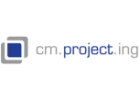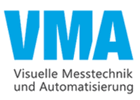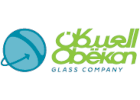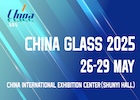In addition to the typical challenges of sustainably producing high-quality glass at optimized costs, the glass industry is facing new paradigm-shifting challenges: carbon-neutrality and circularity.
Achieving low carbon glass production is the first key challenge of the glass industry for the years to come. Many governments and companies have announced clear targets to reach carbon-neutrality in the coming decades. The glass industry must play its part.
Circular economy is the second key challenge for the glass industry. Beyond increased use of cullet, the full lifecycle of the furnace must be considered, including its end of life and refractory recycling.
Refractory solutions are essential to glass furnaces and their performance. Therefore, they play a key role to support glassmakers in these new challenges.
Services to support the shift to carbon-neutrality
The path to the industrial production of carbon-neutral glass still faces many obstacles. The most significant one being the switch to renewable energy sources. Two main contenders - electricity and hydrogen – are being tested and developed by many players in the industry. Other options such as biogas and biofuels are also under investigation.
Despite this uncertainty, we know that there will be an impact of switching fuels on glass furnace refractories and that more flexibility will be needed in the energy mix, especially during the transition period.
In order to mitigate risks on furnace safety and lifetime, numerical simulation services based on an expert knowledge of refractories will be key to anticipate and make the best refractory choices. Corrosion models allow to analyze the impact of parameters such as glass temperature profile, glass velocity profile, refractory composition and cooling efficiency on refractory lifetime. These numerical simulation services help choose the best refractory solutions for glass furnace specific conditions.
The changes in operating conditions – which have never been seen at this scale before - will also reinforce the need for real-time monitoring of furnaces. Instrumenting refractories with sensors to follow in real time the evolution of furnace wear will secure furnace operations, trigger necessary adjustments to operating conditions or if necessary, prompt maintenance or repair operations before a critical incident.
Higher performance refractory solutions
Technologies and measures enabling the shift to carbon neutrality – such as electrical boosting, greater insulation at both glass contact and superstructure and hydrogen combustion technology - are demanding higher refractory performance.
In superstructure application, the use of oxy-combustion technology and higher thermal insulation results in increased exudation and corrosion.
There are several high quality products in the refractory portfolio that meet these requirements. The use of low exudation fused cast AZS in combination with high alumina and/or high zirconia fused cast materials has proven to be highly suitable to cope with more soliciting furnace conditions.
Superstructure using ER 1851 Lowex
Use of high zirconia for tuckstone application
Superstructures and tuckstones in particular will undergo more corrosive atmospheres. High zirconia tuckstones will ensure the required higher resistance to corrosion but will typically be more susceptible to thermo-mechanical stress. Associating a composite ceramic shield - with high compression resistance and low thermal conductivity - to a high zirconia tuckstone will protect it from the risk of cracks due to these stresses. As such, the insulated tuckstone will be able to play its role in avoiding thermal losses. The stability of the superstructure as well as the thermal protection of the below located soldier blocks significantly increase and contribute to a longer furnace lifetime.
Oxyfuel combustion, though not a new technology, is coming back into relevance for hybrid and hydrogen furnaces. This technology induces comparably high running temperatures combined with high water vapors and alkaline concentration in the fumes. Refractories must withstand these new conditions, particularly in the crown.
The first choice for crowns in oxyfuel combustion are fused cast refractory solutions such as low exudation-AZS materials or fused cast high alumina. An assembly with very tight specifications ensures the required corrosion and creep resistance properties of the furnace crown.
Electrical boosting directly results in higher temperature at the bottom of a glass furnace, in parallel with an increased convection flow rate of the melt. Using fused cast tiles is the well-known answer to those challenges. However, this may no longer be enough: a complete refractory solution for the furnace bottom should be considered.
Void free fused cast tiles are the first element of this solution. Beyond higher corrosion resistance, they must ensure joint closure after heat-up to guarantee the safety of the furnace bottom.
Bottom paving solutions: Yttrium doped AZS paving ER 2010 RIC tiles with ERSOL SL safety layer
Performance of mortars should not be overlooked. Harmonized dilatation of the various layers of tiles and mortars is essential to avoid unexpected glass infiltration.
For furnaces with high electrical power, the use of extra high electrical resistivity fused cast refractory solutions particularly designed for those extreme conditions – such as Xilec 9 - must be considered. These materials are the premium choice and safest option for harsher operating conditions due to high current density.
Beyond the impact on the furnace paving, higher temperatures at the bottom of the glass furnace also impact the lower section of soldier blocks. Reinforced filling is required in this area where end cast used to be enough with a move to soldier blocks with further reduced and tightly controlled casting cavity.
Circularity
A first step towards circular economy is reducing the quantity of materials needed to achieve a similar performance. Extending furnace lifetime and maximizing the use of the refractory asset through the use of high quality refractories and targeted repair service operations can support this objective.
At the end of the production lifecycle, all glass furnaces face the same issue: a high quality product becomes waste, and in some cases even hazardous waste.
Several established providers in the market are offering demolishing and waste-evacuation services. Some of them offer the revalorization of waste materials, that are transformed and recycled into new raw materials.
The responsibility of the glass industry for the “after-life” of their process materials becomes even more evident when refractories may be classified as hazardous waste at the time the furnace is shutdown, such as for materials containing chrome oxides.
The conscientious exposure with the question of what happens to those materials does not stop after they are evacuated and removed from the site. Many sustainability charters include the treatment of waste material and drive the glassmakers’ responsibility further forward.
Those questions become particularly sensitive in countries where legislation holds the furnace owner responsible even beyond the evacuation of the waste materials. In those areas it becomes crucial to find a service provider that grants an approved utilization.
Refractory suppliers are part of glassmakers’ scope 3. Selecting refractory providers that can ensure a high use of secondary raw materials and a low carbon energy mix will become a key competitiveness factor for glassmakers in the years to come.
Conclusion
The glass industry faces the paradigm-shifting challenges of carbon-neutrality and circularity. This journey will mobilize all industry partners working together to achieve ambitious targets. As a part of the glass industry, dedicated refractory and refractory services suppliers have a key role to play and can support glassmakers in the transition by relying on their refractory expertise, innovation capabilities and customer centric approach.



























